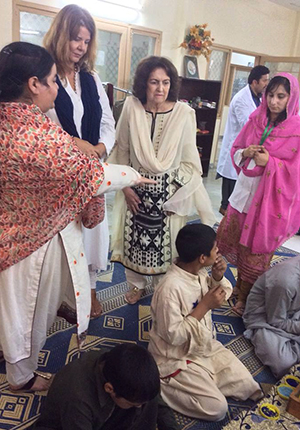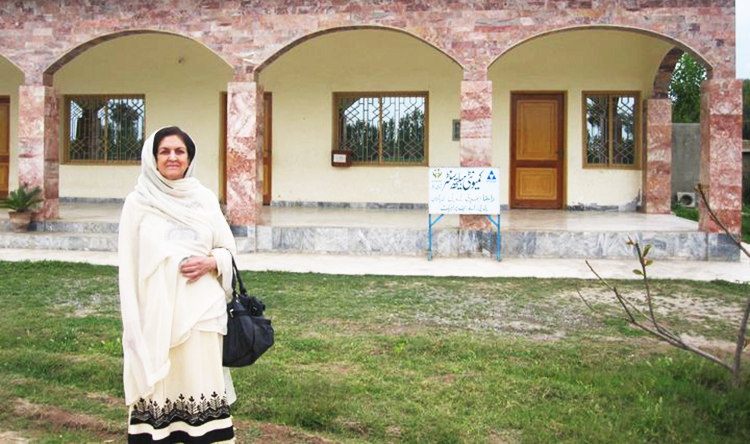Written by: Aiza Azam
Posted on: October 22, 2015 | 
Dr. Parveen Azam, Head of Dost Foundation

She identifies herself as a missionary doctor, and the seed for her life’s work was planted when she was a young boarder at the Convent of Jesus and Mary in Murree. “It was a different time; we lived in a dream world, our own bit of heaven. The way we were taught is very different from what teaching has become today.” Her teachers, whom she refers to as the students’ “psycho-social parents”, lavished attention on their charges and imbued them with high ideals. In an environment of missionaries working for the uplift of marginalized communities, she decided to work with lepers, whom she considered as the most ostracized section of society.
Dr. Azam’s father, Dost Mohammad Khanzada, held emancipated views and wanted all his daughters to have a good education. She had wanted to pursue a career in law, but he insisted she become a missionary doctor. “My father told me, ‘I’ll build you a hospital, provide you a salary and buy you a car so you can travel to different communities and work with the poorest of the poor.’” Her maternal grandfather was also a medical doctor, with an MBBS from King Edward Medical College in Bombay, and was an important role model for the family children. Dr. Azam’s father passed away at the young age of 45. In December 1954, she graduated from the Convent, carrying her father’s dream with her.
Graduating from Fatimah Jinnah Medical College in 1961, she joined the civil service the following year and went to work for the NWFP government. Her work in primary healthcare necessitated travelling to far flung and neglected areas, working with communities at the grassroots level in villages, valleys and on mountain tops. In 1988, she retired from civil service but continued to practice. Around this time, she increasingly felt that she hadn’t gotten a chance to serve the marginalized communities, which was actually the reason why she had initially become a doctor.
By 1992, drug addicts had become a common sight on the streets of Peshawar, but all of a sudden, one day, they all seemed to have disappeared. She found that the police had begun rounding them and throwing them in prison or dumping them outside the city. Eventually, they began congregating at Karkhaana Market (the smugglers’ market), which did not fall under police jurisdiction. There, she discovered a big compound with some 300 addicts, including women and children; a number of dead bodies were also lying around, some half-eaten by jackals. “They were totally dehumanized. I felt very strongly that I needed to help them, to try and give them some dignity.” Along with a small team, she began digging shallow trenches in the area to try and give the dead a decent burial; she would also conduct on-site counseling sessions. Initially, the addicts found it hard to believe that the people helping them had no expectation of a return; they were used to being ostracized, and facing abuse and mistreatment at the hands of agents of the system.

Gradually, Dr. Azam and her team built up a foundation of trust, but not without its share of challenges. Early on, they were threatened by the drug mafia. “The compound was surrounded by shops selling ammunition and drugs; the owners began aerial firing when we arrived one day because we were taking their clients away. We continued undeterred.” Another time, the team arrived to discover that all the addicts had disappeared. Someone had spread rumors that Dr. Azam and her team would take them all away and sell their organs. It took some convincing to quash this lie and re-engage. Within a short time, however, the addicts were voluntarily seeking Dr. Azam’s team for help. As numbers continued to grow with time, they took a bungalow in the Hyatabad area and began their first in-patient, out-patient program.
Dr. Azam explains that the institution was named after her father. “He gave me his legacy of being a friend to the friendless,” she says.
Since its humble beginning back in 1992, Dost Foundation has certainly come a long way. Its campaign for a drug-free Pakistan has continued to prosper over the last 23 years, and shows no signs of slowing down any time soon.
Click to view related video
You may also like: